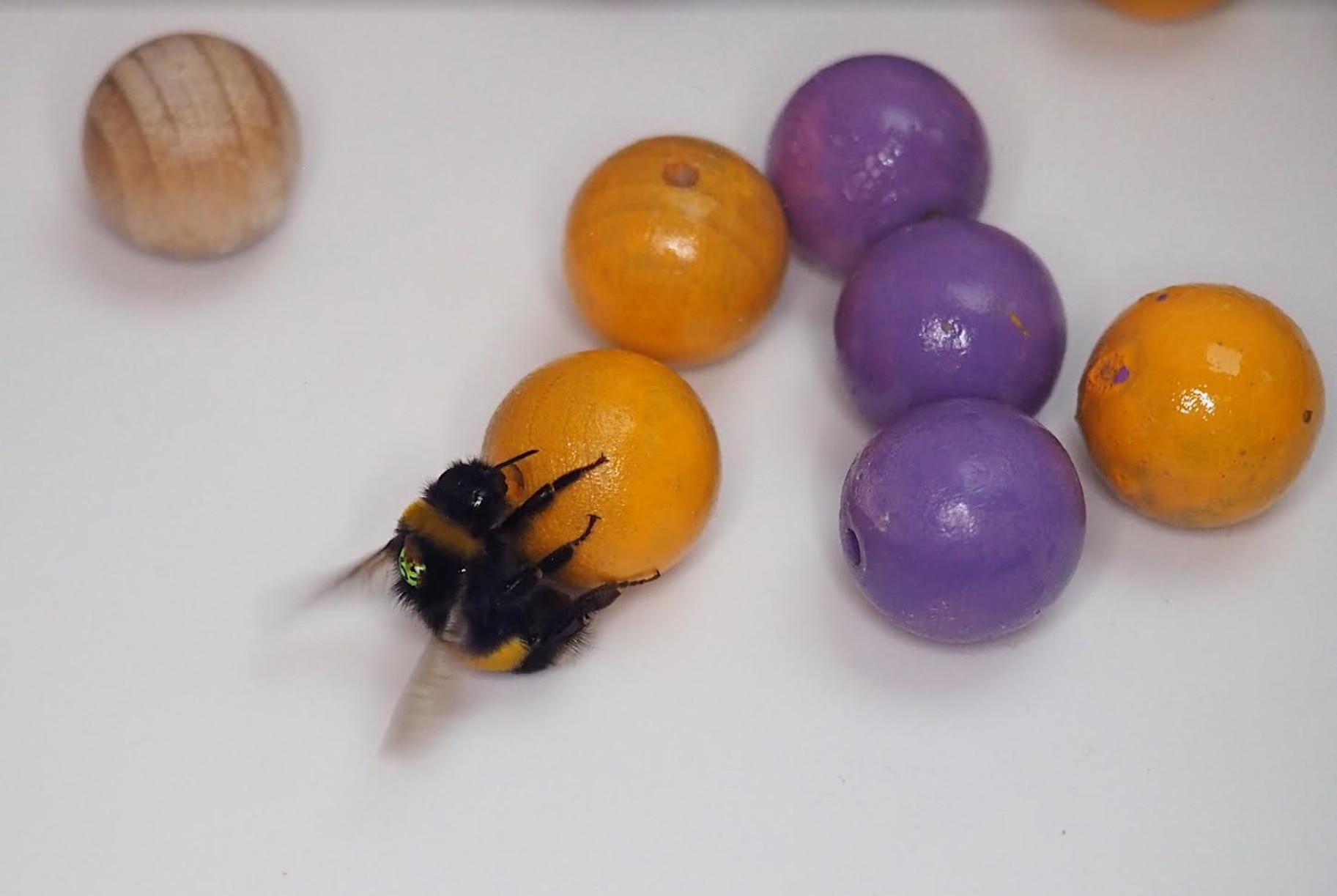Create a free profile to get unlimited access to exclusive videos, sweepstakes, and more!
Bee-ball! Baby bumblebees play with toys just for the fun of it
Bees just wanna have fun too.

Chucky (now streaming on Peacock!) picks up where Cult of Chucky, the seventh film in the Child’s Play series, left off and continues the wacky and violent afterlife adventures of a doll possessed by the spirit of a killer. While Chucky stretches the definition of child's play to homicidal extremes, juvenile play is a normal and mostly harmless part of growing up, skinned knees and hurt feelings aside.
Play is a way of exploring the world, of investigating our surroundings and learning how to interact with the environment. It’s an indication of a more complex experience of the world. Often, whether we realize it or not, we use whether an animal participates in play to determine if they have feelings, if there’s really something going on inside their heads. We see our children play and we watch our pets play and we can’t help but imagine that they’re more the same than they are different. We imagine a line, somewhere along the spectrum of animal life, with play on one side and automatons on the other. New evidence suggests that line may be further away than we thought, if it exists at all.
Samadi Galpayage, a PhD student at Queen Mary University, and colleagues, put bees to the playtime test and found that they like a good time as much as anyone, according to a recent study published in the journal Animal Behavior.
It all started a few years ago when another group of researchers trained bees to roll a ball to a target in exchange for a reward. The bees succeeded in their assigned task, but researchers noticed something else. Some bees would roll the ball even when they weren’t being rewarded. That got Galpayage wondering if they might have been doing it for fun.
“Having worked with bees, watching their behavior and seeing the differences between individuals, you can’t help but wonder if there’s something more to them than being workaholics,” Galpayage told SYFY WIRE.
The first question the researchers had was if bees were attracted to the balls because of their shape or color, and the rolling was just an unintended consequence, or if they were rolling the balls on purpose. To find out, they created an environment with the nest on one end and a feeding area with unlimited sugar water and pollen on the other. Between the two ends was the experimental arena. The arena offered an unobstructed path from the nest the feeders and bees were free to fly straight there and back if they wanted, or they could check out the scenery. On one side of the path there were freely moving wooden balls. On the other side the balls were stuck to the floor.
The bees entered both areas fairly evenly at first, but once they figured out balls on one side rolled, all bets were off. According to Galpayage, once bees experienced the ball rolling activity they visited that side of the arena much more often. That suggests a preference, but not whether the bees are having a good time.
“One defining aspect of play is that the behavior is repeated, and we saw that in the bees. They would come back and roll the balls again and again. That suggests that it might be rewarding. They’re not getting anything for doing this,” Galpayage said.
The second experiment sought to answer the pleasure question more definitively. In this test, bees were presented with one of two color chambers, one at a time. One chamber contained movable balls and the other was empty, but the bees couldn’t see if there were balls or not until they entered. The chambers were swapped, from one with balls to one without or vise versa, every 30 minutes, six times a day, for two days. The question was whether the bees would associate a particular room color with the presence of playthings and acquire a preference. That’s where the second part of the experiment comes in.
“Individual bees were exposed to both chambers at the same time but this time they were both empty. We found that bees were more likely to enter the chamber where they had previously experienced the ball rolling, which tells us there’s something rewarding about the ball rolling activity,” Galpayage said.
At the time of this writing, play among bees has not been observed in wild settings, but given the opportunity, all of the bees in the lab engaged in play. Interestingly, they don’t all play at the same rate and researchers found some interesting patterns in the data. Younger bees engaged with rolling balls more than older ones, and males played for longer periods of time than females. In young bees, those who emerged from the larval cell about three days prior, tended to engage with the balls at an increasing rate as they aged. Then play leveled off and declined.
“We were curious to see what would happen with the bees because when they come out of the larval cell, they are adults, at least physiologically. What we found was that as bees start to experience the world, as they leave the nest for the first time, the number of ball rolls increases with age and then decreases in a bell-shaped curve. We find that same curve in many other mammals as well. That was another piece of the puzzle that indicated this might be something like play,” Galpayage said.
These experiments seem to suggest that bees not only play but they have fun while they’re doing it. Taking that in combination with previous research showing that bees are capable of feeling pain, paints a picture of bees not as mindless worker drones, but feeling creatures with complex inner lives. That’s ultimately what Galpayage hopes people take from this. She leaves us with a final thought.
“It seems very likely that doing this behavior that seems to be rewarding in itself, that bees might be feeling something like pleasure. Hopefully that will encourage people not only to care about bees because they are pollinators and important, but to care about bees because they might feel pleasure, or suffer, or both.”

























